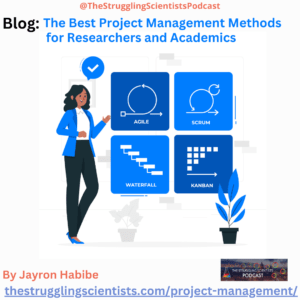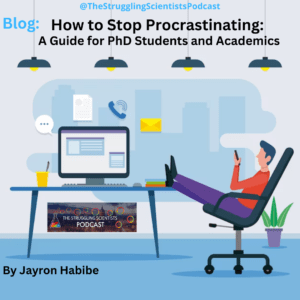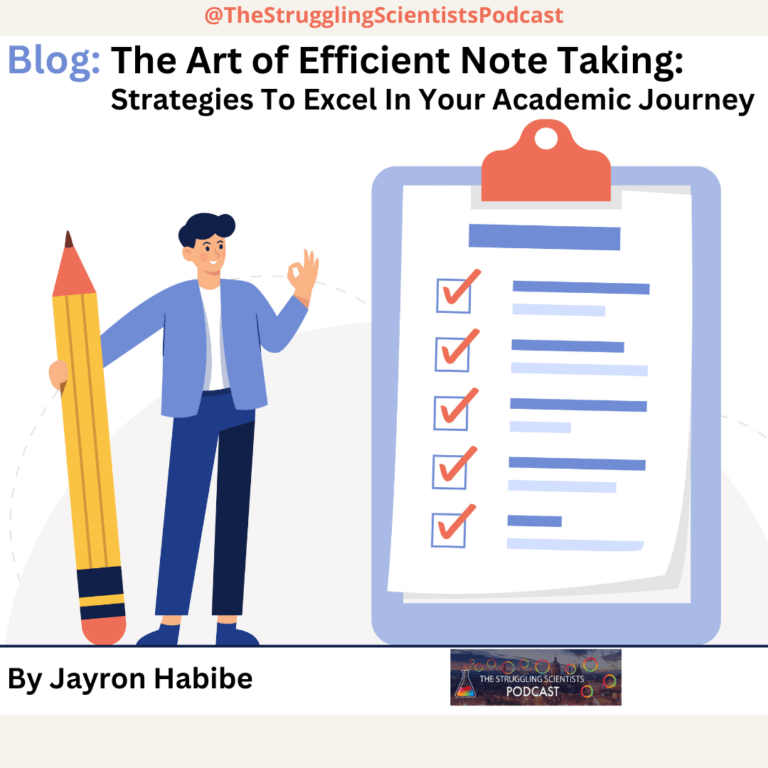Why is Note Taking Important for Academics?
Note taking is a skill that lies at the heart of academic success. As academics and PhD students, our days are filled with absorbing vast amounts of information, attending lectures, conducting research, and delving into complex subjects. Amidst this whirlwind of knowledge, the ability to capture, organize, and retain essential information becomes paramount. That’s where effective note taking methods come into play.
Whether you’re struggling to keep up with lecture content, seeking efficient ways to organize research findings, or simply looking to optimize your notes, this comprehensive guide will equip you with the tools you need to excel in your academic pursuits.
The Outline Method
The Outline Method is a structured approach that brings order to the chaos of information. It allows you to capture the key ideas and their hierarchical relationships, transforming a jumble of disorganized notes into a coherent framework. By starting with a main idea and branching it out into subpoints, you create a visual representation of the subject matter that facilitates understanding.
This method enables you to grasp the overarching themes while retaining the intricate details, ensuring a comprehensive overview that is essential for academic success.
Fortunately, technological advancements have made adopting the Outlining Method even more convenient. Various note taking applications, such as Microsoft OneNote, Evernote, and Notion, offer digital platforms that enable you to create and manipulate outlines effortlessly. With features like drag-and-drop functionality and collapsible sections, these tools empower you to navigate your outlines with ease, further enhancing your note taking experience.

Pros
Cons
- Hierarchical representation: By organizing ideas into main points and subpoints, the method helps establish relationships and connections between different concepts.
- Clarity and organization: The Outlining Method brings structure to note taking, making it easier to understand and remember complex information.
- Flexibility and adaptability: The hierarchical structure of outlining allows for easy revision, expansion, and reorganization of notes as new insights and information emerge.
- Difficulty with non-linear topics: Some subjects or discussions may not lend themselves well to a strictly hierarchical structure, making it challenging to represent complex interconnections.
- Limitations for visual learners: Outlining is primarily a text-based method, which may not fully accommodate the learning preferences of visual learners who benefit from more visual or spatial representations.
- Subjectivity in organization: The hierarchical structure of outlining relies on personal interpretation, which can lead to inconsistencies or differences in organization among individuals.
Difficulty to use: 6/10
Best use cases:
- Lecture/conference note taking
- Literature reviews
The Cornell Method
The Cornell Method is a note taking technique that offers a systematic and comprehensive approach to capturing and reviewing information. It provides a structured format that allows for clear organization, easy navigation, and efficient recall. Dividing your note sheet into three distinct sections, the Cornell Method sets the stage for effective engagement with the material, from the classroom to independent study.
The first section of the Cornell Method involves creating a narrow column on the left-hand side of the page. In this column, known as the “Cues” section, you write down concise and relevant prompts or questions that serve as triggers for later review. These cues / keywords act as valuable indicators, highlighting the main ideas and important details captured in your notes.
The second section, situated to the right of the cues, is the “Notes” section. This is where you record the main ideas, supporting details, and explanations during lectures, research, or reading. It is essential to focus on capturing the essence of the content rather than transcribing all of the info, as this encourages active listening, critical thinking, and synthesis of information.
The final section is located at the bottom of the page and is called the “Summary” section. After completing the lecture or studying a topic, take a few moments to reflect on the notes you have taken. Use this section to summarize and condense the key points from the “Notes” section, articulating the information in your own words. This process reinforces understanding and retention while creating a concise review resource.
Here is an example of how I’m using the Cornell method to take notes of a book I’m reading. The book is “Ultralearning” by Scott Young and the app I’m using to take notes is of course my favorite app Notion.

Pros
Cons
- Focus on key concepts: By using the Cues section, the method encourages the identification and highlighting of important ideas and details, facilitating efficient review and recall.
- Active engagement: The Cornell Method promotes critical thinking during lectures or while studying, as it requires summarizing and condensing information in the Notes and Summary sections.
- Efficient review and self-testing: The Cues section serves as a helpful tool for self-testing and reviewing the material, allowing for targeted and efficient studying.
- Initial time investment: Adopting the Cornell Method may require extra time initially to set up the note sheet with the proper sections and format.
- Potential for redundancy: There is a possibility of redundant information between the Notes and Summary sections if not used with careful intention, leading to inefficiencies in review and study.
- Personal interpretation of cues: The effectiveness of the cues in the Cues section relies on personal interpretation and understanding, which may vary among individuals and potentially result in inconsistent or less effective cues.
Difficulty to use: 3/10
Best use cases:
- Organizing research projects
- Lecture/ conference note taking
- Note taking research articles
The Mapping Method
The Mapping Method is a note taking technique that embraces the power of visual thinking. It allows you to create diagrams, charts, or concept maps to represent relationships between ideas, concepts, and key points. By visually mapping out the connections, you unlock a unique perspective that enhances understanding and aids in knowledge retention.
The beauty of the Mapping Method lies in its ability to stimulate creativity. Instead of relying solely on linear notes, this approach allows for the exploration of non-linear relationships and associations. By using shapes, colors, arrows, and lines, you can capture the essence of complex concepts in a visually appealing and meaningful way.
Here is an example of a mind map I used to remember the information of my papers while preparing for my defense.

Pros
Cons
- Visual representation: The Mapping Method utilizes visual diagrams, charts, or concept maps, making it easier to understand complex ideas and relationships.
- Creativity and engagement: This method stimulates creativity and engaging your imagination while taking notes. It encourages a more active and immersive learning experience.
- Non-linear organization: The Mapping Method allows for non-linear organization of information, accommodating complex hierarchies, interconnections, and diverse perspectives.
- Time-consuming: Creating detailed visual maps can be time-consuming, especially for complex subjects with extensive information.
- Limited text-based details: The focus on visual representation may lead to less emphasis on capturing detailed textual information, which may be a limitation in content-heavy subjects.
- Limited scalability: Large and complex topics may become challenging to map effectively due to space limitations or difficulties in representing intricate relationships.
Difficulty to use: 7/10
Best use cases:
- Systems thinking and interdisciplinary research
- Understanding / explaining scientific research and experiments
- Brainstorming ideas
The Charting Method
The Charting Method is a note taking technique that revolves around creating clear and concise charts or tables to organize information. By visually representing data, relationships, and comparisons, it unlocks the power of visualization, making complex ideas more accessible and comprehensible.
Central to the Charting Method is the creation of categories or columns that represent key themes, concepts, or variables relevant to the topic at hand. These columns serve as anchor points for organizing and presenting information in a structured manner. Depending on the nature of the subject, columns can include headings such as “Main Ideas,” “Examples,” “Evidence,” or “Supporting Theories.”
The Charting Method encourages the systematic filling of cells within the columns. These cells contain specific details, examples, or evidence related to each category. By capturing relevant information in a concise and organized manner, the Charting Method facilitates efficient review, easy comparison, and quick reference.
Here’s is an example of how I used to simplify and get a nice overview of my gene of interests function in various cancer types while preparing for my PhD defense. Once again using Notion.

Pros
Cons
- Systematic structure: The method’s structured framework with categorized columns and cells promotes organization and ensures that important details are captured and easily accessible.
- Scalability: The Charting Method is highly scalable and adaptable, allowing for the handling of large amounts of data and complex relationships across various academic disciplines.
- Data-driven analysis: This method is particularly effective for subjects that involve data analysis, comparative studies, or research-driven fields, as it enables clear presentation and interpretation of information.
- Limited flexibility: The Charting Method may not be as flexible as other note taking methods when it comes to capturing nuanced or narrative-based information. It may be more suitable for subjects that are data-driven or require structured analysis.
- Potential oversimplification: Due to the concise nature of the chart format, there is a risk of oversimplifying complex ideas or omitting important details that could be captured in more extensive note-taking methods.
- Limited space: Depending on the complexity of the subject, the space within cells or columns may be limited, potentially restricting the amount of information that can be included within each category.
Difficulty to use: 8/10
Best use cases:
- Project management
- Comparative studies
- Literature reviews
The Sentence Method
The Sentence Method revolves around distilling complex concepts and explanations into concise, coherent sentences. Rather than capturing every detail verbatim, this approach encourages active listening and critical thinking, as it involves summarizing information in a succinct manner. By focusing on the core essence of the content, the Sentence Method helps learners distill knowledge into digestible units.
The beauty of the Sentence Method lies in its ability to convey ideas effectively and efficiently. It challenges note takers to extract key points, main ideas, and supporting evidence from lectures, readings, or discussions. As a result, the note taker becomes an active participant in the learning process, engaging in thoughtful analysis and evaluation while capturing essential insights.
By reducing information to concise sentences, this method fosters an environment of active engagement and comprehension. It allows learners to process and rephrase the material in their own words, reinforcing understanding and facilitating long-term retention. Additionally, the Sentence Method promotes clarity, ensuring that notes can be easily revisited and understood, even after a significant amount of time has passed.
I also used this method to distill down key bits of information I thought I would need for my PhD defense. here is the example I used to take notes on insulin secretion.

Pros
Cons
- Brevity and clarity: The Sentence Method encourages note takers to distill complex ideas into concise sentences, promoting clarity and ensuring that the core essence of the information is captured.
- Efficient review: The concise format of the Sentence Method facilitates quick and efficient review of notes. The key points are easily identifiable, making it easier to revisit and reinforce understanding.
- Active engagement: Summarizing information in sentences requires active listening, critical thinking, and analysis, fostering deep engagement with the content and enhancing comprehension.
- Potential information loss: Due to the focus on summarizing information into concise sentences, there is a risk of omitting important details or nuances that could be captured in more extensive note-taking methods.
- Less suitable for content-heavy subjects: In subjects that involve a significant amount of detailed information, such as technical or scientific disciplines, the Sentence Method may not capture all the necessary details or complexities.
- Limited contextual information: The focus on brevity in the Sentence Method means that contextual information surrounding key points may be omitted, potentially reducing the depth of understanding when reviewing the notes.
Difficulty to use: 2/10
Best use cases:
- Lectures/presentations
- Review a subject
- Preparing presentations
The Boxing Method
The Boxing Method revolves around the idea of breaking down information into different sections or “boxes” on a page. Each box represents a specific category, topic, or aspect of the subject matter. By segmenting information, note takers gain a clear overview and can easily locate key points, supporting details, examples, or definitions within their notes. It promotes an organized approach, ensuring that every piece of information finds its rightful place.
The visual appeal of the Boxing Method is undeniably captivating. The distinct boxes create a visual hierarchy, enhancing comprehension and recall. When reviewing notes, the eye naturally gravitates toward each box, making it easier to digest and process information. This method not only makes note-taking visually appealing but also aids in revision, as information is visually structured and readily accessible.
The boxing method is quite simple to implement as illustrated here below. In some ways it resembles the sentence method packaged into a neat container that is more appealing.

Pros
Cons
- Visual organization: The Boxing Method provides a visually appealing and structured format for note taking. The use of distinct boxes helps organize and compartmentalize information, making it easier to locate specific details and create a visual hierarchy.
- Clarity and comprehension: By breaking down information into different boxes, the Boxing Method enhances comprehension and recall. The visual layout aids in understanding relationships between different concepts, fostering a deeper understanding of the subject matter.
- Versatility: The Boxing Method can be adapted to various academic disciplines and research contexts. It allows note takers to create boxes based on themes, chapters, characters, variables, or any other relevant categories, making it applicable across different subjects.
- Potential information overlap: With the Boxing Method, there is a risk of information overlap or ambiguity when categorizing content into different boxes. Care must be taken to ensure that information is appropriately assigned to the correct boxes.
- Lack of flexibility for nonlinear subjects: The Boxing Method may be less suitable for subjects that do not follow a linear or hierarchical structure. In such cases, other note-taking methods that allow for more fluid connections and free-form organization might be more appropriate.
- Limited space: Depending on the complexity of the subject or the amount of information to be captured, the space within each box may become limited. This can be a challenge when trying to include detailed information or extensive explanations.
Difficulty to use: 1/10
Best use cases:
- Lectures/presentations
- Review a subject
- Brainstorming ideas
Conclusion
Here, I’ve listed a couple of the best note taking methods I’ve come across during my PhD. Many of which I’ve tried and still use depending on the circumstance while others I’ve abandoned completely.
It’s important to realize that there is no inherently best note taking method out there and that you don’t need to know or use all of them either. Ultimately, note taking methods are simply tools that we have at our disposal, and the results we obtain using these tools will depend on how we use them and our skill and familiarity employing the tool.
That being said, the best we can hope for is to have access to the right tool for the right job. That is why it is advisable to become familiar with at least some of these methods in order to have a method at your disposal for whatever situation you might find yourself in during your academic career and life in general. If you’d like to learn more about academic note taking I can highly recommend “a recipe for great note taking” and “The 10 commandments of academic note taking” by guest writer Ilya Shabanov.
Thanks again for checking out this article and I hope you’ve enjoyed it and found it useful. Til next time!









